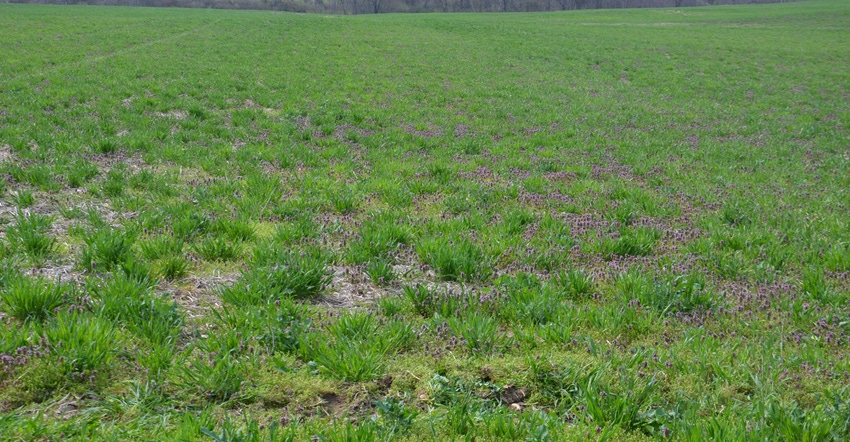January 9, 2020

A great way to start the new decade is to make a commitment to invest in healthier soil. The soil is much more than a medium for growing crops; it’s a living biological ecosystem. You rely on billions of tiny microorganisms to do their jobs and create a favorable environment for plants to grow. Allow these microorganisms to work for you and reap the benefits.
Too many farmers across Indiana are planting into soils that have been degraded over the past 75 years, largely due to extensive tillage and a monoculture cash-cropping system of corn and soybeans. Farmers have been able to produce ever-increasing yields using fertilizer, pesticides and improved seed genetics, but will that always continue to be the case?
4 principles of soil health
Farmers who have implemented four principles of soil health are finding they can improve the health of their soil, maintain and improve yields, and consider reducing commercial inputs. At the same time, they’re building a soil that is more resilient to changes in weather.
1. Increase diversity. There are no monocultures in nature. The plant community on the soil surface directly impacts the soil biological community below the surface. The plant community and their roots are a food source for the soil biology. Different kinds of crops and cover crops help feed and support the biology in the soil.
2. Lengthen the growing season. You can do it with continuous living roots. The sun is the ultimate source of energy — free energy. Try capturing that energy and putting it to work for you. Plant a cover crop anytime a cash crop isn’t being grown, especially over the winter. A living root growing all year long will help keep microbiology in the soil healthy and productive.
3. Decrease disturbance. Extensive tillage is detrimental to soil health. When soil is tilled, the biological community is flipped upside down, pore channels are broken apart, and organic matter is lost. Every tillage pass means a loss of soil carbon and reduced soil organic matter, leading to loss of the potential for more available nutrients. A no-till system will improve the health of your soil.
4. Maintain soil cover. Always keep soil cover, such as residue, mulch or plant stalks, on the surface of the soil. The purpose for soil cover isn’t just erosion protection. Residue maintains stable conditions for the microorganisms. Soil microbes live in that residue at the soil surface and convert it into organic matter and nutrients. Soil microorganisms are more active at constant moisture and temperature conditions, and the residue on the surface goes a long way in maintaining that consistency. If you want microbiology to work for you, you must maintain optimum living conditions for it.
To start your 2020 journey to a healthier soil, talk to local farmers who are using soil health systems to see how these practices are working for them. Start off the new year and decade committed to improving the health of your soil.
Donovan is a district soil conservationist with the Natural Resources Conservation Service. He writes on behalf of the Indiana Conservation Partnership.
About the Author(s)
You May Also Like






